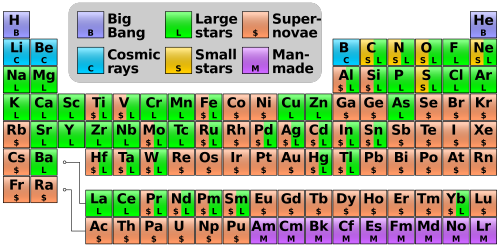Hannahhaifisch - HH

More Posts from Hannahhaifisch and Others





slope point, the southernmost tip on new zealand’s south island, is hit with such persistently violent southern antarctic winds that trees grow in the leeward direction. (click pic or link for credit x, x, x, x, x, x)





Glass art by Asaf Zakay.

Latest SDO PFSS image for: AIA 0171

For the first time, scientists have subjected quantum entanglement to extreme levels of acceleration, and there’s nothing fragile about this “spooky action at a distance”- it’s way more robust than we thought.
In recent experiments, entangled particles held firm even while being accelerated to 30g - 30 times Earth’s acceleration - and the results could have a big impact on our search for a unified theory of modern physics.
“These experiments shall help [us] unify the theories of quantum mechanics and relativity,” says one of the team, Rupert Ursin, from the University of Vienna, Austria.
Continue Reading.

BLACK HOLES WITH RAVENOUS APPETITES DEFINE TYPE I ACTIVE GALAXIES
** Synopsis: New research suggests that the central black holes in Type I and Type II active galaxies consume matter at different rates, upending popular theory. **
For decades, astronomers have tried to pin down why two of the most common types of active galaxies, known as Type I and Type II galaxies, appear different when observed from Earth. Although both galaxy types host voracious supermassive black holes known as active galactic nuclei, which actively swallow matter and emit massive amounts of radiation, Type I galaxies appear brighter to astronomers’ telescopes.
New research from an international team of astronomers, with contributions from the University of Maryland, makes a major modification to a popular theory called the unified model. According to this model, the active nuclei of Type I and Type II galaxies have the same fundamental structure and energetic profile, but appear different solely because the galaxies point toward Earth at different angles. Specifically, Type II galaxies are tilted such that they are obscured by their own rings of dust, making Type I galaxies appear brighter by comparison.
The new results, published September 28, 2017, in the journal Nature, suggest that Type I and Type II galaxies do not just appear different – they are, in fact, very different from each other, both structurally and energetically. The key factor that distinguishes Type I and Type II galaxies is the rate at which their central black holes consume matter and spit out energy, according to the researchers.
“The unified model has been the prevailing wisdom for years. However, this idea does not fully explain the differences we observe in galaxies’ spectral fingerprints, and many have searched for an additional parameter that fills in the gaps,” said Richard Mushotzky, a professor of astronomy at UMD and a co-author of the study. “Our new analysis of X-ray data from NASA’s Swift Burst Alert Telescope suggests that Type I galaxies are much more efficient at emitting energy.”
To conduct the study, Mushotzky and his colleagues re-examined data from 836 active galaxies detected by NASA’s Swift Burst Alert Telescope that strongly emit high-energy, or “hard,” X-rays – the same X-rays that medical technicians use to visualize the human skeleton.
To measure the mass and growth rate of these galaxies’ active nuclei – the supermassive black holes at the galaxies’ centers – the researchers used data from 12 different ground-based telescopes spread across the globe to complement the data from the Swift satellite.
“This project began in 2009, as part of my doctoral work at UMD, and has radically grown with the help of more than 40 researchers across the globe,” said Michael Koss (M.S. ‘07, Ph.D. ‘11, astronomy), a research scientist at Eureka Scientific, Inc. and a co-author of the paper. “When I started out, I spent a month of lonely nights by myself at the Kitt Peak National Observatory observing a few dozen galaxies. I never dreamed we would eventually expand to such a large sample, enabling us to answer many amazing scientific questions for the first time.”
By comparing differences in the X-ray spectra between Type I and Type II galaxies, the researchers concluded that, regardless of which way the galaxy faces Earth, the central black holes in Type I galaxies consume matter and emit energy much faster compared with the black holes at the center of Type II galaxies.
“Our results suggest this has a lot to do with the amount of dust that sits close to the central black hole,” said Mushotzky, who is also a fellow of the Joint Space-Science Institute. “Type II galaxies have a lot more dust close to the black hole, and this dust pushes against the gas as it enters the black hole.”
For decades, astronomers preferentially studied Type II galaxies, largely because the active nuclei of Type I galaxies are very bright, making it difficult to see the stars and gas clouds that constitute the rest of the galaxy. Because the unified model suggested that all active galaxies were fundamentally the same, astronomers focused their efforts on the galaxies that host Type II active nuclei because they are easier to observe.
“But now, because our results suggest that the two types of galaxies are indeed fundamentally different, it is likely that a lot of researchers will re-evaluate their data and take another look at Type I galaxies,” Mushotzky said. “By putting us on a path to better understand the differences between the galaxies that host Type I and Type II active nuclei, this work will help us better understand how supermassive black holes influence the evolution of their host galaxies.”
IMAGE….Many active galactic nuclei are surrounded by large, dark, donut-shaped clouds of gas and dust, as seen in this artist’s rendering. A popular theory known as the “unified theory” suggests that differences in the brightness of active galactic nuclei, as seen from here on Earth, are due to the placement of this donut of obscuring dust relative to our angle of observation. However, new research suggests that two of the most common types of active galactic nuclei do, in fact, exhibit fundamental physical differences in the way they consume matter and spit out energy. Credit: NASA/JPL-Caltech

Where Your Elements Came From
The hydrogen in your body, present in every molecule of water, came from the Big Bang. There are no other appreciable sources of hydrogen in the universe. The carbon in your body was made by nuclear fusion in the interior of stars, as was the oxygen. Much of the iron in your body was made during supernovas of stars that occurred long ago and far away. The gold in your jewelry was likely made from neutron stars during collisions that may have been visible as short-duration gamma-ray bursts. Elements like phosphorus and copper are present in our bodies in only small amounts but are essential to the functioning of all known life. The featured periodic table is color coded to indicate humanity’s best guess as to the nuclear origin of all known elements. The sites of nuclear creation of some elements, such as copper, are not really well known and are continuing topics of observational and computational research.
Image Credit: Cmglee (Own work) CC BY-SA 3.0 or GFDL, via Wikimedia Commons

Constellation de nuit pour papa ❤️ #origami #tessellation #papa



How spheres impact water has been studied for more than a century. The typical impact for a rigid sphere creates a cavity like the one on the upper left - relatively narrow and prone to pinching off at its skinny waist. If the sphere is elastic –squishy – instead, the cavity ends up looking much different. This is shown in the upper right image, taken with an elastic ball and otherwise identical conditions to the upper left image. The elastic ball deforms; it flattens as it hits the surface, creating a wider cavity. If you watch the animations in the bottom row, you can see the sphere oscillating after impact. Those changes in shape form a second cavity inside the first one. It’s this smaller second cavity that pinches off and sends a liquid jet back up to the collapsing splash curtain.
From the top image, we can also see that the elastic sphere slows down more quickly after impact. This makes sense because part of its kinetic energy at impact has gone into the sphere’s shape changes and their interaction with the surrounding water.
If you’d like to see more splashy stuff, be sure to check out my webcast with a couple of this paper’s authors. (Image credits: top row - C. Mabey; bottom row - R. Hurd et al., source; research credit: R. Hurd et al.)


-
 infobese liked this · 3 weeks ago
infobese liked this · 3 weeks ago -
 enchantingpenguinstranger liked this · 4 years ago
enchantingpenguinstranger liked this · 4 years ago -
 chi-chi-chi-chia reblogged this · 4 years ago
chi-chi-chi-chia reblogged this · 4 years ago -
 pieropresta-blog liked this · 5 years ago
pieropresta-blog liked this · 5 years ago -
 loa-asecret reblogged this · 5 years ago
loa-asecret reblogged this · 5 years ago -
 loa-asecret liked this · 5 years ago
loa-asecret liked this · 5 years ago -
 cemoleynkk liked this · 5 years ago
cemoleynkk liked this · 5 years ago -
 derbederuhum liked this · 5 years ago
derbederuhum liked this · 5 years ago -
 helehelee reblogged this · 5 years ago
helehelee reblogged this · 5 years ago -
 fun-cat reblogged this · 5 years ago
fun-cat reblogged this · 5 years ago -
 himmelsgot liked this · 5 years ago
himmelsgot liked this · 5 years ago -
 driftwoodi reblogged this · 5 years ago
driftwoodi reblogged this · 5 years ago -
 baekhyunbabybunni reblogged this · 6 years ago
baekhyunbabybunni reblogged this · 6 years ago -
 baekhyunbabybunni liked this · 6 years ago
baekhyunbabybunni liked this · 6 years ago -
 zauberer06 liked this · 6 years ago
zauberer06 liked this · 6 years ago -
 mrally liked this · 6 years ago
mrally liked this · 6 years ago -
 go-wind-stuff reblogged this · 6 years ago
go-wind-stuff reblogged this · 6 years ago -
 colemcg79-blog liked this · 6 years ago
colemcg79-blog liked this · 6 years ago -
 classyflapkidcalzone liked this · 6 years ago
classyflapkidcalzone liked this · 6 years ago -
 mimepe liked this · 6 years ago
mimepe liked this · 6 years ago -
 wgwplay liked this · 6 years ago
wgwplay liked this · 6 years ago -
 glamour-boy reblogged this · 6 years ago
glamour-boy reblogged this · 6 years ago -
 glamour-boy liked this · 6 years ago
glamour-boy liked this · 6 years ago -
 thehazardking reblogged this · 6 years ago
thehazardking reblogged this · 6 years ago -
 electrospider1-blog reblogged this · 6 years ago
electrospider1-blog reblogged this · 6 years ago -
 mydrunkphilosphy reblogged this · 6 years ago
mydrunkphilosphy reblogged this · 6 years ago -
 eduardojorgebarbosasilva-blog liked this · 6 years ago
eduardojorgebarbosasilva-blog liked this · 6 years ago -
 angelz4ever liked this · 6 years ago
angelz4ever liked this · 6 years ago